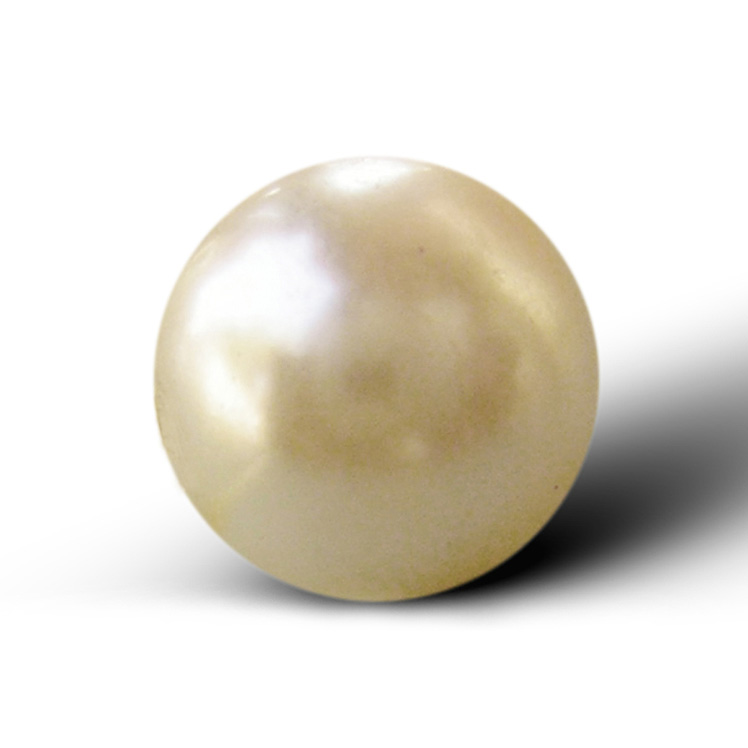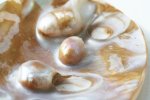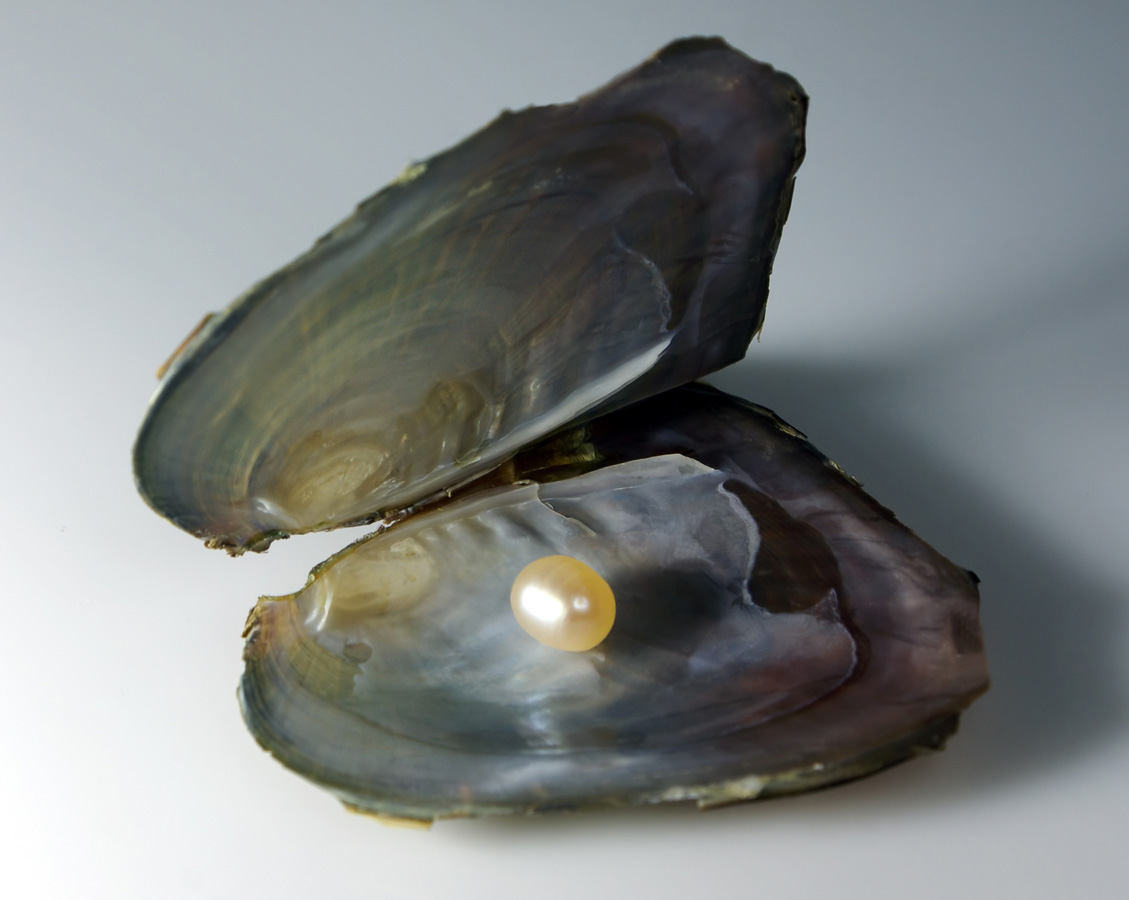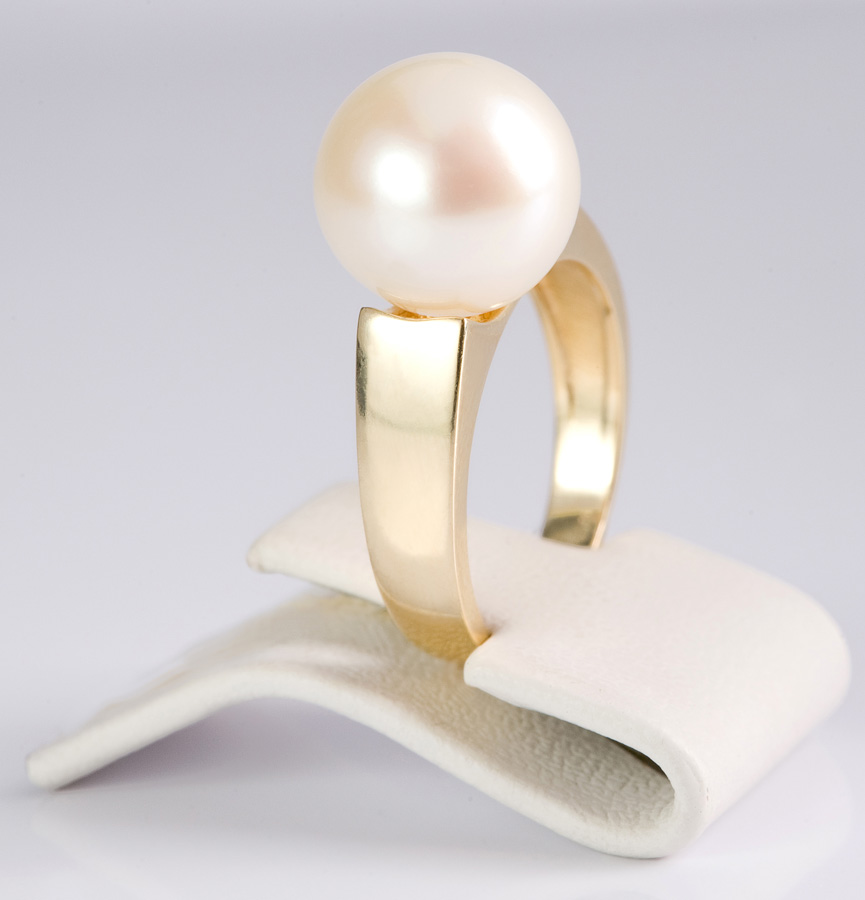Natural Pearls are organic gemstone formed inside a pearl oyster due to the concentric deposition of nacreous layers around any foreign body which has entered the animal accidentally, without the aid of any human agency.
How are natural pearls formed?
It is the result of an accident.
- A fish searching for food passes near an oyster and finding nothing moves off elsewhere by using its tail.
- This movement causes a cloud of sand, from which several grains lodge in the oyster.
- The oyster can get rid of most of these, except those which bury themselves in its flesh.
- These, along with a few epithelial cells will be changed into pearls.
- In a pearl, only aragonite is formed, in concentric layers.
- The aragonite crystals have their optic axes at right angles to their main surfaces, so that all the optic axes in a pearl are radial.
- This is important not only in the creation of the pearl’s lustre and orient but in determining the differences between a natural and a cultured pearl.
- The aragonite layers are not continuous, but have irregular edges where a layer is not complete.
- This is the cause of the roughness of a natural or cultured pearl when rubbed against the teeth, compared with the smoothness of an imitation pearl.
- Depending on the parasites which attack them, and the way in which they react, various pearl formations are produced.
- Among these are found Baroque pearls, Blister pearls and Concretions.
- Salt water and fresh water oysters and mussels can produce nucleated and non nucleated pearls.
- Blister Pearls are swellings which are formed on the inner surface of the oyster shell or mussel.
- They must be removed very carefully from the shell so that the layer of mother-of-pearl remains.
- In some cases, when cut from the shell, the base remains flat and without a pearly coating.
- If they were detached, the pearl might well be too small or too baroque in its shape.
- Baroque Pearls are formed within the mantle and are distorted and irregular in shape. They occasionally resemble familiar objects such as teeth, tadpoles, mushrooms or snails.
- Pearl Concretions are caused by the amalgamation of a number of small natural pearls in the mantle of the oyster. Pearl concretions are always baroque in shape and rarely of much value.
The chemical composition of a pearl can vary according to its place of origin. In certain cases the quantity of organic material or of water percentage is different. But these variations are very minor and the following figures are fairly accurate.
| Composition | Natural Pearl |
|---|---|
| Calcium Carbonate (Aragonite) | 91.72% |
| Organic Material (Conchiolin) | 5.94% |
| Water | 2.23% |
| Other Substances | 0.11% |
Colour: Pearls are found in many colours. Colour in pearls is defined by:
- Body colour is the predominant basic colour of the pearl.
- Overtone is the one or more colours that overlie the body colour.
- Orient is the play of colour effect observed over the surface. It may be a combination of pink, blue, green and silver shades.
Cause of Colour: The main factors which are responsible for the colour in pearls can be classified with respect to the environment and the chemical and optical properties.
- Environment
- Presence of mineral salts and salinity in the water. This is related to the rock types and the associated soil e.g.
- A small amount of magnesium carbonate, without iron or aluminum gives the white colour.
- Iron gives a light brown colour.
- Copper carbonate (azurite) gives a blue colour.
- Zinc carbonate (smithsonite) gives a grey colour.
- Cream and gold contain a large percentage of magnesium carbonate, iron oxide and aluminum.
- Amount of plankton. Water rich in plankton gives the pearl a light green tint.
- Temperature of the water. In general, moderate temperature produces finer lustre in pearls, warmer waters produces duller lustre.
- Presence of mineral salts and salinity in the water. This is related to the rock types and the associated soil e.g.
- Chemical and Optical properties: Chemicals include the presence of chromophore (colour causing elements), while the optical effects include the quality of internal reflections and interference of light. As a result colours obtained are pink, white, silver (optical) and yellow, salmon pink, black, blue (chemical).
How to identify natural pearl?
The separation of natural pearl from cultured pearl is not possible without the use of certain distinct testing techniques. With regular improvements in the culturing process it is getting more and more difficult to conclusively identify natural pearls. On the whole, the percentage of natural pearls available is very minimal in comparison to the cultured pearl availability. Most of the following are indicative tests and not conclusive. But when performed together, they provide conclusive evidence.
- Tooth Test: Rub the pearls lightly along the surface of your upper teeth.
- If they feel gritty or rough, they may be pearl.
- Care should be taken since it may scratch the pearls if done improperly.
- Both natural and cultured pearls often exhibit the same reaction.
- As such this test can be used to distinguish between Imitation pearls and Natural / cultured pearls.
- Drill Hole Test: Examine the drill hole area with a magnifying lens.
- If a dark dividing line separating the nacre from a pearl bead nucleus is visible, the pearl is a cultured pearl.
- If a series of growth lines, which get more yellow or brown towards the centre, is seen, it is a strong indication of a natural pearl.
- The diameter of a drill hole can also give some detail about the nature of the pearl.
- In the case of a cultured pearl, the drill hole measures 0.06mm while in a natural pearl it is rarely larger than 0.04mm.
- Lucidoscope: This technique uses the fact that the transparency of the layers of nacre (mother-of-pearl) varies depending on the direction from which it is viewed under a strong beam of light.
- This can be observed with the naked eye or with a lens.
- A cultured pearl with an MOP nucleus would be more transparent along the parallel layers of the bead nucleus than down the length.
- This effect is better observed in immersion rather than in air.
- Commonly pure benzene is used since it evaporates quickly and therefore does not harm the pearl.
- This technique fails when thick skinned cultured pearls are examined.
- Pearl Compass: The principle of the instrument is that a certain position according to its crystallographic magnetic field.
- This instrument consists of powerful magnets, in the centre of which is suspended the pearl to be tested using a torsion free thread.
- Due to differences in their internal structures, a cultured pearl with a mother-of-pearl core will cause the pearl to turn because of its layered structure.
- The radial and concentric structure of a natural pearl does not exhibit the turning movement.
- Endoscope: This instrument consists of a powerful source of light within housing. The light beam is then passed through a fine hollow needle which has an aperture and two polished mirrors at its end aligned in opposite directions at 45° to the beam of light. The light beam travels through the tube and reflects from the first inner mirror through the aperture into the pearl being examined.
- In the case of a natural pearl, this reflected light enters the concentric layer structure and travels round it by a process of total reflection, until it strikes the second mirror.
- It is then reflected off this mirror and out through the drill hole where it will be seen as a bright flashes when examined through the microscope.
- In the case of a cultured pearl due to the layered structure of the nucleus, the light is not reflected onto the second mirror, but instead is transmitted through the parallel layers and is lost to the observer and no flash of light is seen.
- Lauegrams: A narrow beam of x-rayspassed through pearl exhibits a pattern of spots on a photographic plate.
- The pearl must be examined in three different directions to obtain an accurate result.
- Two distinct patterns are observed for natural and cultured pearls.
- Natural pearls will exhibit a hexagonal spot pattern in all directions.
- Cultured pearls will exhibit a hexagonal and a tetragonal spot pattern depending on the direction in which they are examined.
- X-Radiography: This test relates to the transparency of the pearl structure to X-rays.
- Conchiolin, which is an integral part of the pearl structure, is more opaque to X-rays than calcium carbonate.
- As a result, a natural pearl will show a concentric structure from the centre to the surface.
- In a cultured pearl either the central portion is broad (non-nucleated) or with parallel layers surrounded by concentric structures (nucleated).
- A complete string of pearls can be examined at a single exposure.
- Fluorescence: In general, natural pearls exposed to X-rays do not exhibit any fluorescence. However, Australian pearls and freshwater pearls have been known to fluoresce. Cultured pearls generally tend to fluoresce under X-rays with the exception of some non-nucleated pearls.































Leave a Reply
You must be logged in to post a comment.